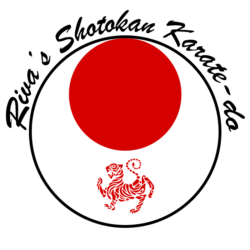
One of the best things you can do for yourself and your baby is to keep in good shape throughout your pregnancy. As you enter the second trimester, you’ll likely begin to worry about the weight you’ll gain, and consistent exercise will definitely help you gain an appropriate amount.
This article is the second in a series that discusses how to safely continue your karate training during your second trimester of pregnancy*. You can read the first article that talks about preparation for pregnancy and exercise safety for first trimester here.
New Symptoms and How to Cope
Hopefully the nausea that came with the first trimester has subsided for you. Biologically speaking, your body has been adapting to the increased level of hormones throughout your first trimester that you began producing since conception. Around the start of your second trimester, or week 13, is about when your body will have adapted to your new levels, allowing you to feel less fatigued and nauseated. Of course, the unlucky ones among us can remain fatigued or nauseated throughout their entire pregnancy. I didn’t feel complete relief from the nausea until about week 20.
However, despite my energy returning and feeling a bit more like myself, a new symptom soon showed up: lower back pain. I would feel fine in the morning, but throughout the day, the part of my spine right below the bend in my back would start to feel compressed. Our dojo’s adult karate classes are held in the evenings, so my back would be sore by the time classes would begin.
I started to feel comfortable doing vibration techniques again, but with a growing belly, it started to pull on my round ligaments along the sides of my stomach and obliques, and it felt like my tummy was becoming more of a secondary motion, much like how my ponytail swings after a sharp head movement (think Tekki shodan).
To conquer the second trimester, I purchased a sport pregnancy belt. I wanted a belt that was easy to wash/clean, breathable because I’d be sweating in it, adjustable so I could wear it for the remainder of my pregnancy and postpartum, durable so that it’d stay in place and keep my belly in place for the entirely of class, and comfortable to take the edge off (or relieve me completely) of the lower back pain I was experiencing by late afternoon.
If you are experiencing any back pain or new symptoms, please discuss it with your doctor. Being pregnant, pain management is especially tough when you can’t use many of the over-the-counter pain medications like ibuprofen. I personally wanted to avoid any unnecessary medications during my pregnancy, so finding relief with a belly band/pregnancy belt was huge for me. The belt helped hold my stomach in place so that I could comfortably train in my katas, and it provided that much-needed counter pressure for the round ligament pains and lower back pain.
Exercise
I previously talked about exercises and techniques in your first trimester. Now that you’re in your second trimester, here is a modified list.
What to Avoid
- Contact Kumite/Sparring
As you enter the second trimester, your baby will begin to come up from safety of your pelvis. This is when your baby bump may start to show (if not already), so it is now even more important to not spar to avoid any direct impacts to your abdomen. - Repetitive Jumping/Jumping Really Fast
Repeated or fast jumping may become uncomfortable for you, especially if your baby bump is big enough to “bounce around” independently from your core. More importantly, the only risk with jumping from now until you deliver your baby is the possibility of falling onto your stomach and causing injury to your baby. As you gain weight and your baby bump becomes bigger, you may find yourself becoming off-balance, so perhaps substitute repetitive jumping for marching. But if you’re feeling up to it, keep on practicing the jump in Heian Godan. - Training Too Long or Too Hard
This will be on every one of my “do not” lists. As I mentioned previously, your developing baby is incredibly selfish and takes whatever nutrients it needs from your body, and you have a finite supply (that is replenished when you eat and drink). Training uses a lot of those nutrients at a faster pace and increases the risk of dehydration for yourself, the same as if you weren’t pregnant, but now you have a baby that is depleting your stores even faster. It is very important to keep yourself hydrated because dehydration can lead to serious complications which can lead to birth defects due to lack of water and nutrition. It is not uncommon for mothers to go to the ER feeling awful only to be diagnosed with dehydration and spend the day or night receiving fluids via IV. Aside from water intake, my doctor encouraged me to keep my own heart rate below 140 as a general rule of thumb to keep stress levels low. - Front Abdominal Stretches/Exercises
Now that your baby has moved up to be nearly underneath your abdominal muscles, it’s best to avoid those forward crunches and sit-ups because they put more pressure and pull on the abdomen. You’ll also want to avoid moves that involve contortions or bending over backward. Side crunches are still perfectly fine (and encouraged). This is because during this time, your abdominal muscles may begin to split down the middle (called diastasis recti), and these movements may exacerbate it by putting extra strain on your abdominus rectus and potentially causing longer term problems. If you discover that you have a gap of more than three-fingers width, consult your doctor and do not resume these types of core exercises postpartum, as that will delay healing. - Lying on Your Back for Too Long
In your second trimester, your uterus may be large enough that it could compress the inferior vena cava, the vein that carries blood back to your heart from your lower body, when you lie flat on your back. Instead, keep yourself propped up so that your heart is above your belly button when doing floor exercises.
What you Can Still Do and/or What is Encouraged
- Dynamic & Static Stretching
In the adult classes, we do dynamic stretching at the beginning of class and static stretching at the end of class. In any trimester, stretching will not have any negative impact on the development of your baby, so stretch away! Just be aware that your joints may have relaxed, or loosened, which can increase joint pain or allow you to be a little extra flexible. My doctor told me not to continue stretching to the point where something hurts, just stretch to where it’s uncomfortable. Of course, ask your doctor to find out what’s right for you. - Jumping
Ironically, I included repetitive / fast jumping in the avoidance list, but it is listed here too because the act of jumping will not cause harm to your baby. Jumping itself is safe, but it can pose a risk of falling if you’re feeling off balance. - Kihon/Basics and Kata/Form
Keep on training as usual, just take it easy and keep in mind the points I made earlier, especially about exercising for too long or too hard. In general, it is safe for you to continue at the intensity/level you were at prior to becoming pregnant, but it is not recommended to push yourself farther!
If you have any specific questions or concerns in regards to your pregnancy, please consult your doctor! The information here is based on the average, low to moderate risk pregnancy.
This article is part of a series of karate-do & pregnancy articles written by Tessa Watkins.
